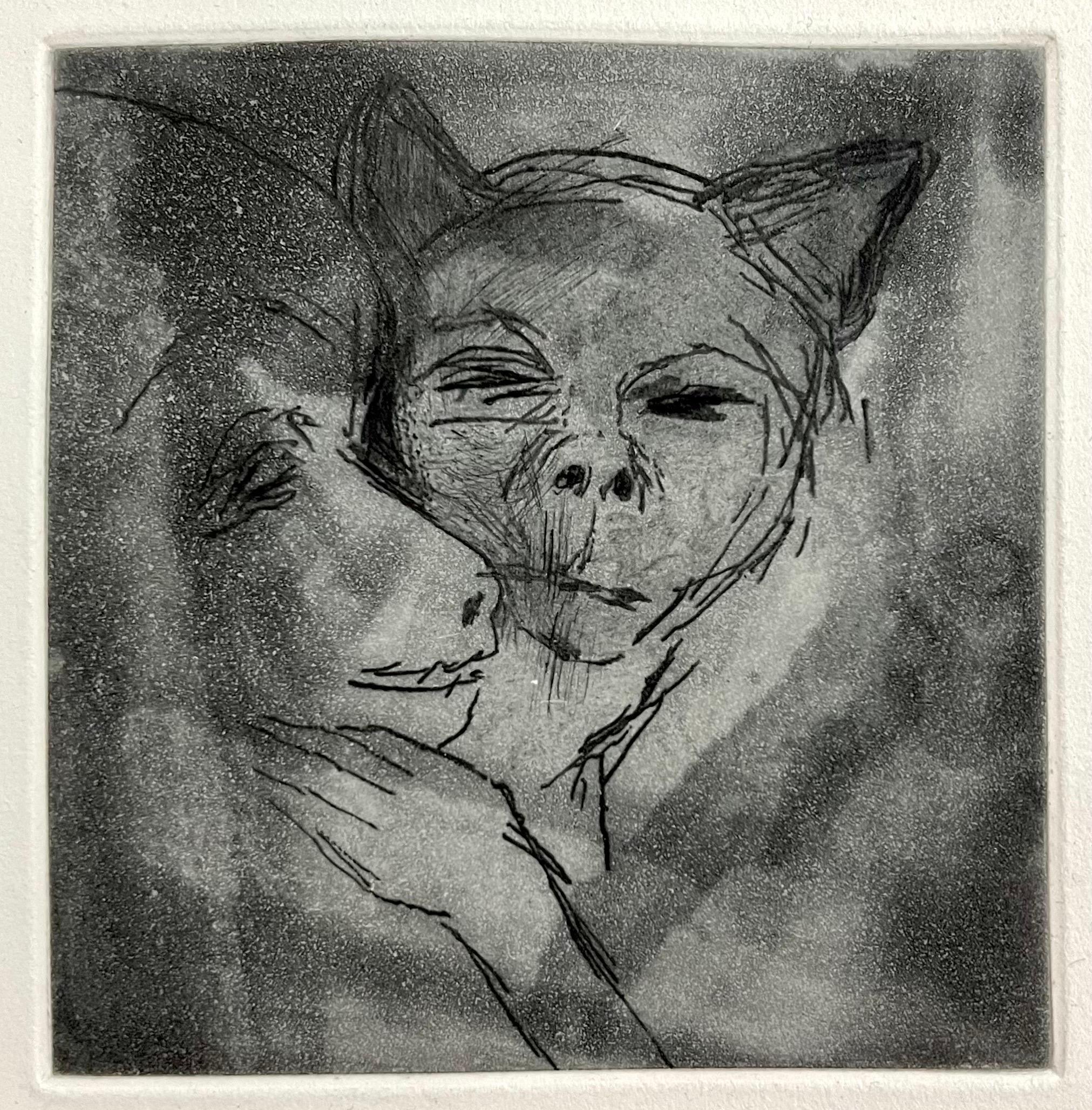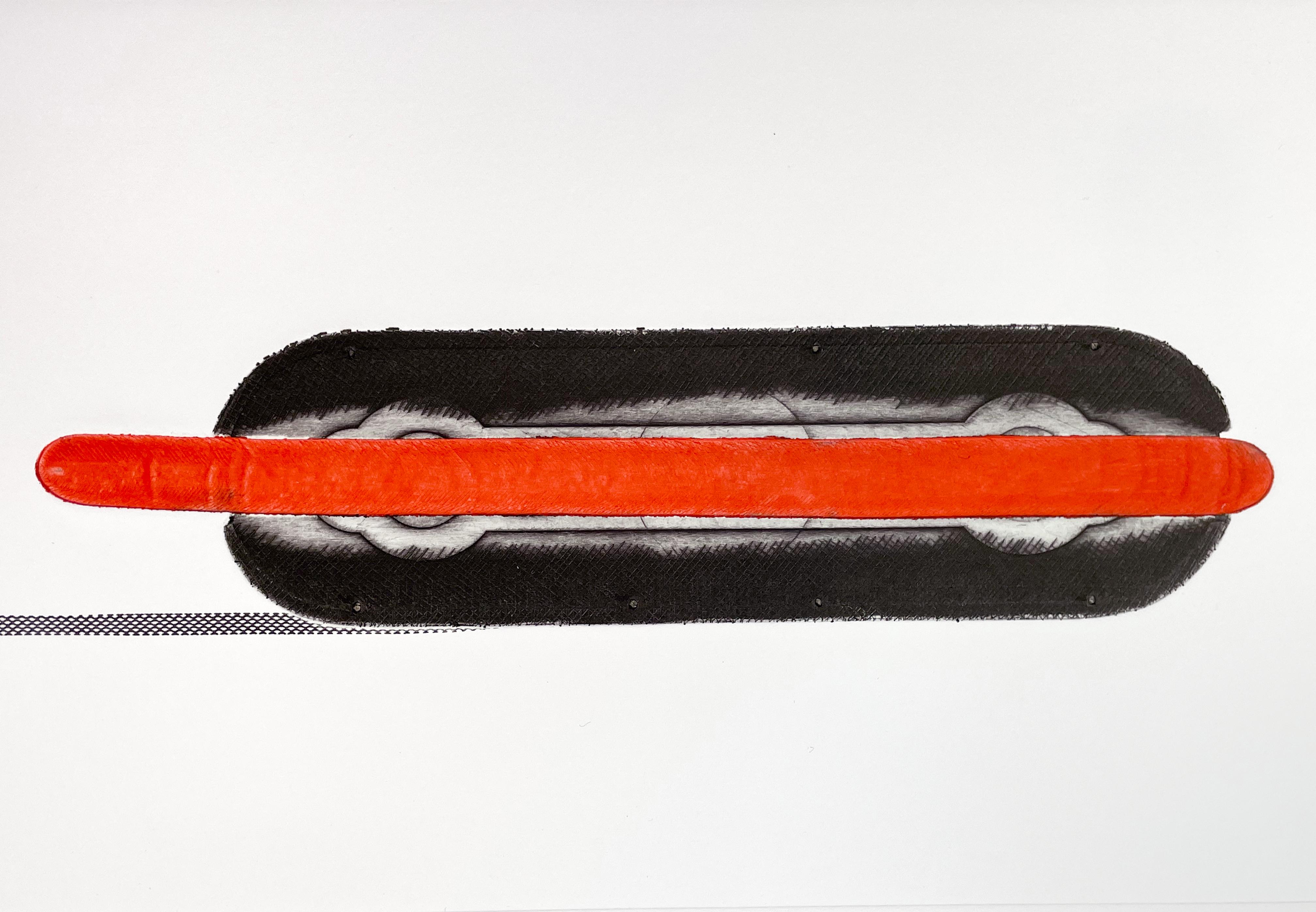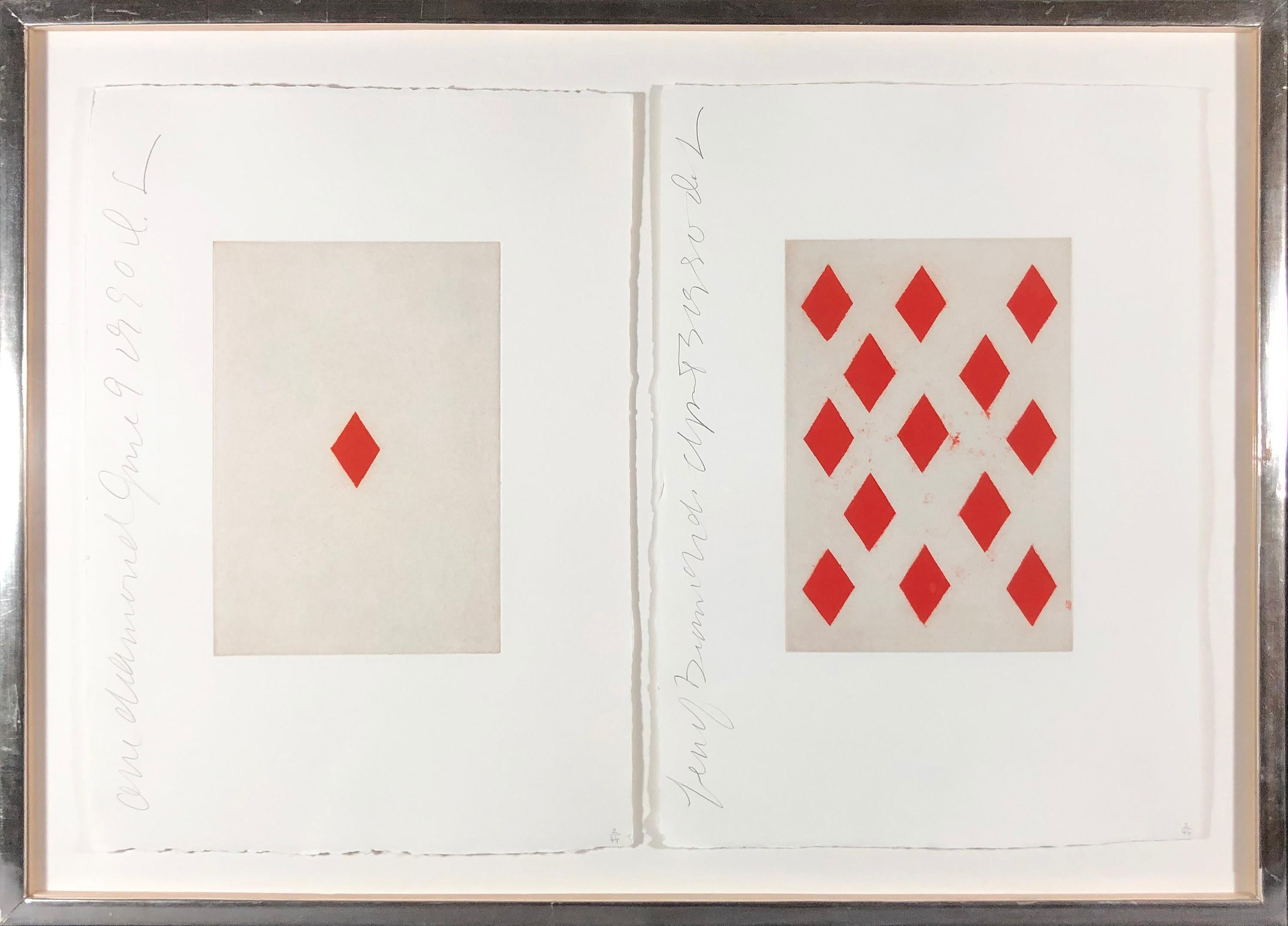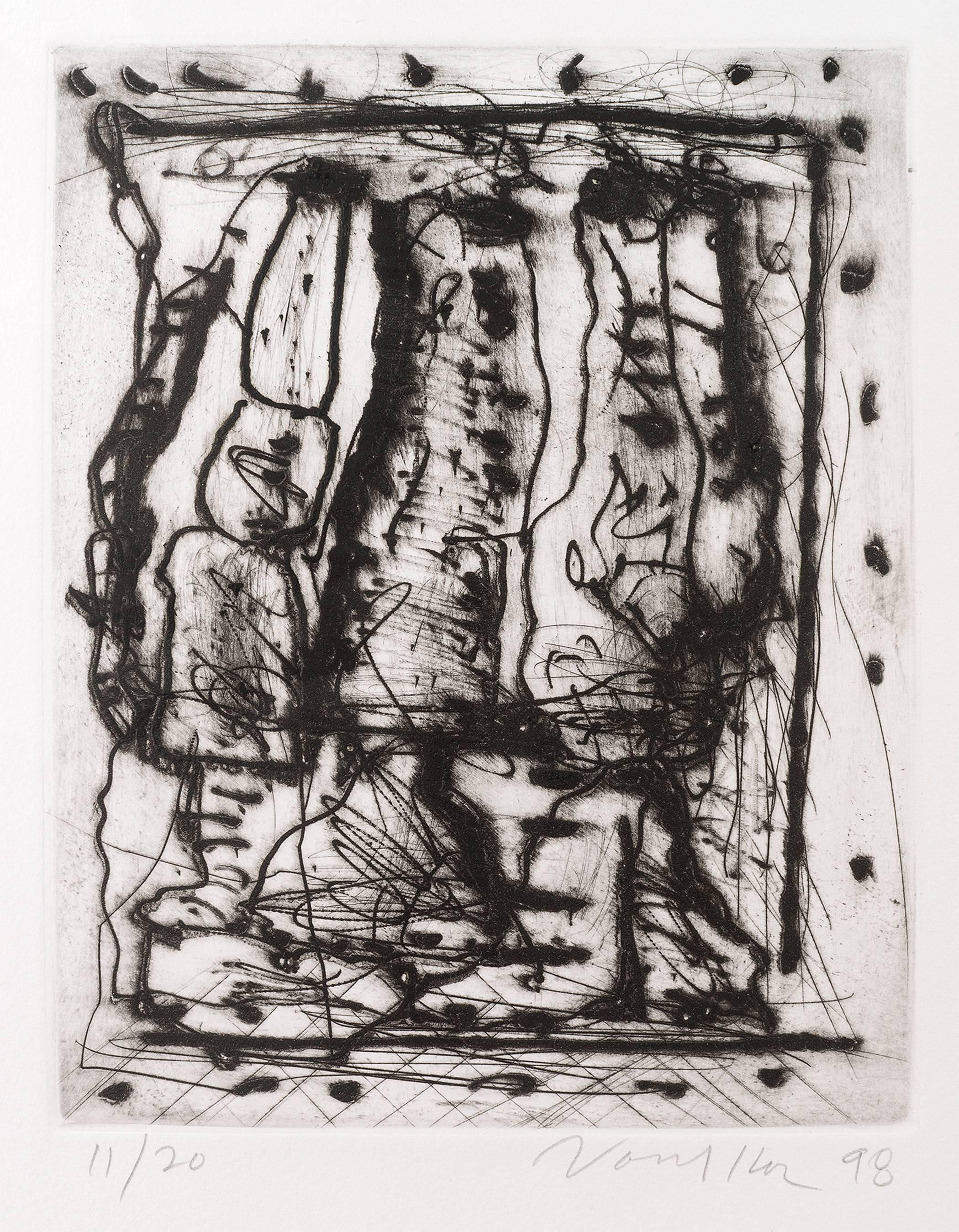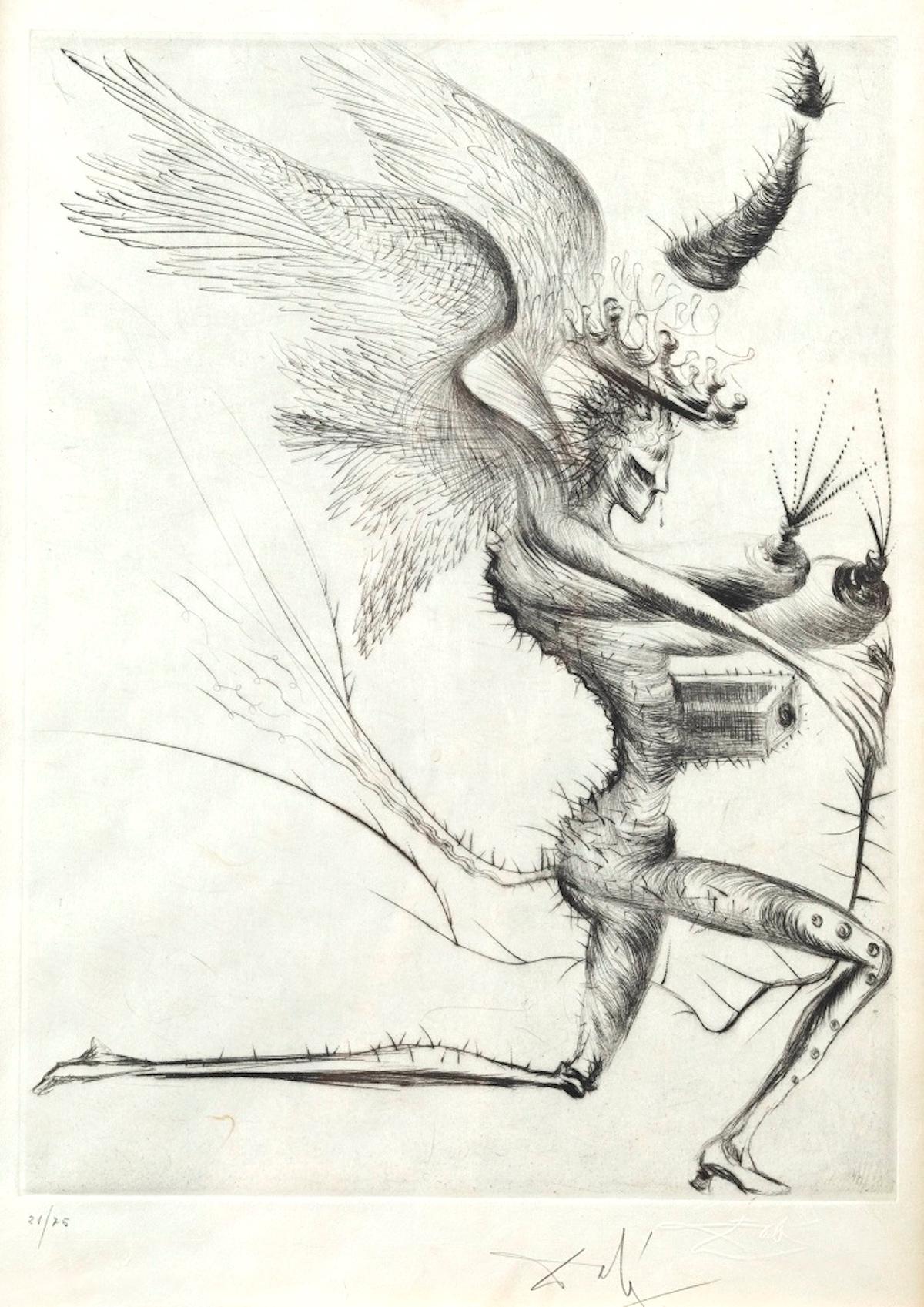Jim DineSmall Pinocchio Aquatint Etching Jim Dine Pop Art Print 1999
1999
About the Item
Jim Dine
The Ohio-born artist Jim Dine brought his ever-shifting, multidisciplinary vision to New York in 1958, a time of transition in the American art world. Abstract Expressionism, which had dominated the scene for years, was on the wane, and a group of young artists, including Dine, Allan Kaprow, Jasper Johns and Robert Rauschenberg, was eager to replace it with a movement that flipped the traditional rules of art-making on their head.
Beyond dissolving the boundaries between mediums and genres, attaching found objects and detritus to their canvases, these revolutionaries began staging performative “happenings” in public spaces, redefining the very definition of a work of art. As Pop art took form, Dine used objects with personal significance, like his paintbrushes, to transform his paintings into two-dimensional sculptures. He was included in the Norton Simon Museum’s 1962 “New Painting of Objects,” often considered the first true Pop art exhibition in America, but he remained a chameleon, constantly changing his style, material and technique.
More than his contemporaries, Dine has forged new paths in drawing, scrawling words and names across the canvas to create graphic, abstract landscapes. He is obsessed by certain motifs — such as hearts and his own bathrobe — which recur in various forms throughout his oeuvre. He has occasionally worked in classical genres, such as portraiture, as exemplified by the 1980 aquatint Nancy Outside in July. He has also co-opted the bold, graphic vocabulary of advertising and commercials, as in the sleek 2010 composition Gay Laughter at the Wake.
Find Jim Dine prints and other art on 1stDibs.
- ShippingRetrieving quote...Ships From: Surfside, FL
- Return PolicyA return for this item may be initiated within 3 days of delivery.
- Small Beasts (Dog) Aquatint Etching Jim Dine Pop Art PrintBy Jim DineLocated in Surfside, FLJim Dine (American, b. 1935) Etching depicting a dog or wolf Published by Enitharmon Press for Whitman College, London 1999 Hand signed in pencil lower right. Measures 9" x 7" sheet size This is not numbered. from a limited edition of 30 (plus proofs). Drypoints with aquatint and spit-bite Printed by Julia D'Amario Jim Dine (born June 16, 1935) is an American pop artist. He is sometimes considered to be a part of the Neo-Dada movement.He was born in Cincinnati, Ohio. In 1953, he attended evening classes at The Art Academy of Cincinnati taught by the influential instructor, Paul Chidlaw...Category
1990s Pop Art More Prints
MaterialsDrypoint, Etching
- Canadian Post Modern Pop Art Lithograph Vintage Poster Memphis Galerie MaeghtBy Jean-Paul RiopelleLocated in Surfside, FLVintage gallery exhibition poster. The Galerie Maeght is a gallery of modern art in Paris, France, and Barcelona, Catalonia, Spain. The gallery was founded in 1936 in Cannes. The Paris gallery was started in 1946 by Aimé Maeght. The artists exhibited are mainly from France and Spain. Since 1945, the gallery has presented the greatest modern artists such as Matisse, Bonnard, Braque, Miró, and Calder. In 1956, Adrien Maeght opened a new parisian venue. The second generation of “Maeght” artists was born: Bazaine, Andre Derain, Giacometti, Kelly, Raoul Ubac, then Riopelle, Antoni Tapies, Pol Bury and Adami, among others. Jean-Paul Riopelle, CC GOQ (7 October 1923 – 12 March 2002) was a painter and sculptor from Quebec, Canada. He became the first Canadian painter (since James Wilson Morrice) to attain widespread international recognition. Born in Montreal, Riopelle began drawing lessons in 1933 and continued through 1938. He studied engineering, architecture and photography at the école polytechnique in 1941. In 1942 he enrolled at the École des beaux-arts de Montréal but shifted his studies to the less academic école du Meuble, graduating in 1945. He studied under Paul-Émile Borduas in the 1940s and was a member of Les Automatistes movement. Breaking with traditional conventions in 1945 after reading André Breton's Le Surréalisme et la Peinture, he began experimenting with non-objective (or non-representational) painting. He was one of the signers of the Refus global manifesto. In 1947 Riopelle moved to Paris and continued his career as an artist, where, after a brief association with the surrealists (he was the only Canadian to exhibit with them) he capitalized on his image as a "wild Canadian". His first solo exhibition took place in 1949 at the Surrealist meeting place, Galerie La Dragonne in Paris. Riopelle married Françoise Lespérance in 1946; the couple had two daughters but separated in 1953. In 1959 he began a relationship with the American painter Joan Mitchell, Living together throughout the 1960s, they kept separate homes and studios near Giverny, where Monet had lived. They influenced one another greatly, as much intellectually as artistically, but their relationship was a stormy one, fueled by alcohol. The relationship ended in 1979. His 1992 painting Hommage à Rosa Luxemburg is Riopelle's tribute to Mitchell, who died that year, and is regarded as a high point of his later work. Riopelle's style in the 1940s changed quickly from Surrealism to Lyrical Abstraction (related to abstract expressionism), in which he used myriad tumultuous cubes and triangles of multicolored elements, facetted with a palette knife, spatula, or trowel, on often large canvases to create powerful atmospheres. The presence of long filaments of paint in his painting from 1948 through the early 1950s[8] has often been seen as resulting from a dripping technique like that of Jackson Pollock. Rather, the creation of such effects came from the act of throwing, with a palette knife or brush, large quantities of paint onto the stretched canvas. Riopelle's voluminous impasto became just as important as color. His oil painting technique allowed him to paint thick layers, producing peaks and troughs as copious amounts of paint were applied to the surface of the canvas. Riopelle, though, claimed that the heavy impasto was unintentional: "When I begin a painting," he said, "I always hope to complete it in a few strokes, starting with the first colours I daub down anywhere and anyhow. But it never works, so I add more, without realizing it. I have never wanted to paint thickly, paint tubes are much too expensive. But one way or another, the painting has to be done. When I learn how to paint better, I will paint less thickly." When Riopelle started painting, he would attempt to finish the work in one session, preparing all the color he needed before hand: "I would even go as far to say—obviously I don't use a palette, but the idea of a palette or a selection of colors that is not mine makes me uncomfortable, because when I work, I can't waste my time searching for them. It has to work right away." A third element, range of gloss, in addition to color and volume, plays a crucial role in Riopelle's oil paintings. Paints are juxtaposed so that light is reflected off the surface not just in different directions but with varying intensity, depending on the naturally occurring gloss finish (he did not varnish his paintings). These three elements; color, volume, and range of gloss, would form the basis of his oil painting technique throughout his long and prolific career. Riopelle received an Honorable Mention at the 1952 São Paulo Art Biennial. In 1953 he showed at the Younger European Painters exhibition at the Solomon R. Guggenheim Museum in New York City. The following year Riopelle began exhibiting at the Pierre Matisse Gallery in New York. In 1954, works by Riopelle, along with those of B. C. Binning and Paul-Émile Borduas represented Canada at the Venice Biennale. He was the sole artist representing Canada at the 1962 Venice Biennale in an exhibit curated by Charles Comfort...Category
1970s Pop Art Abstract Prints
MaterialsLithograph, Offset
- Hungarian Surrealism Pop Art Hebrew Silkscreen Judaica Print Jewish SerigraphBy Jozsef JakovitsLocated in Surfside, FLAbstract Hebrew Prints on heavy mould made paper from small edition of 15. there is a facing page of text in Hungarian folded over. Hard edged geometric abstract prints in color base...Category
1980s Pop Art Abstract Prints
MaterialsArchival Paper, Screen
- Surrealist Abstract Hebrew Aleph Pop Art Silkscreen Judaica Jewish SerigraphBy Jozsef JakovitsLocated in Surfside, FLAbstract Hebrew Prints on heavy mould made paper from small edition of 15. there is a facing page of text in Hungarian folded over. Hard edged geometric abstract prints in color base...Category
1980s Pop Art Abstract Prints
MaterialsArchival Paper, Screen
- Surrealist Abstract Hebrew Shabbat Pop Art Silkscreen Judaica Jewish SerigraphBy Jozsef JakovitsLocated in Surfside, FLAbstract Hebrew Prints on heavy mould made paper from small edition of 15. there is a facing page of text in Hungarian folded over. Hard edged geometric abstract prints in color base...Category
1980s Pop Art Abstract Prints
MaterialsArchival Paper, Screen
- Rainbow Quilt Heart Pop Art Vintage Offset Lithograph Poster Jim Dine, MaeghtBy Jim DineLocated in Surfside, FLJim Dine, Monotypes et Gravures, Galerie Maeght, Paris, 1983. Vintage Offset Lithograph Poster American contemporary pop art. A colorful heart quilt in a rainbow of colors. Jim Dine...Category
1980s Pop Art More Prints
MaterialsLithograph, Offset
- Hot Dog, Colin Self. British Pop Art cold war americana bright red black etchingBy Colin SelfLocated in New York, NYA contemporary of David Hockney and Peter Blake, Colin Self is an important British printmaker whose innovative etching techniques and novel use of found materials have defined his d...Category
Early 2000s Pop Art Figurative Prints
MaterialsDrypoint
- One of Diamond and Thirteen of DiamondsBy Donald SultanLocated in Missouri, MO"One of Diamonds and Thirteen of Diamonds" (from Playing Cards) 1990 Aquatint Engravings Framed Together Each Signed, Titled and Dated Each Numbered Lower Right 2/44 aside from the 1...Category
1990s Pop Art More Prints
MaterialsEngraving, Aquatint
- Untitled Dry Point Etching CR 314-PRBy Peter VoulkosLocated in Kansas City, MODimensions : Image 9 7/8” x 7 7/8”, Paper 19” x 15” Printed at Alfred University Press, Alfred, NY Chop mark: Alfred University Press Signed: Pencil 11/20 Voulkos ‘98 Peter Voulkos (popular name of Panagiotis Voulkos; January 29, 1924 – February 16, 2002) was an American artist of Greek descent. He is known for his abstract expressionist ceramic sculptures, which crossed the traditional divide between ceramic crafts and fine art. While his early work was fired in electric and gas kilns, later in his career he primarily fired in the anagama kiln of Peter Callas...Category
1990s Contemporary More Prints
MaterialsDrypoint, Etching
- Composition - Etching and Drypoint by P. Guccione - 1964Located in Roma, ITComposition is an original Etching and Drypoint realized by Paul Petit in 1964. Hand-signed. Numbered, 41/50. The artwork is depicted through confident strokes in a well-balanced ...Category
1960s Contemporary More Prints
MaterialsDrypoint, Etching
- Le Demon Ailé - Etching and Drypoint - 1969By Salvador DalíLocated in Roma, ITLe demon Ailé is a wonderful black and white drypoint realized in 1969. The artwork is from the portfolio "Vénus aux fourrures", edited by Pierre Argillet, Parigi, 1969. Hand signed in pencil by the artist on the lower margin. Dry stamp on the lower right margin Numbered on the lower left margin. Ed.21/75. Good conditions except for some light yellowing of paper along the margin. Ref: Michler Lopsinger, "Salvador Dali Catalogue Raisonne of Etchings and Mixed-Media Prints 1924-1980", Prestel 1994, n. 371. Salvador Dalí (Figueres, 1904 – Figueres, 1989) is considered one of the most versatile and prolific artists of the XX century and the founding father of Surrealism. In the course of his long career, he successfully experimented with sculpture, fashion, writing, and filmmaking. Dalí epitomizes the idea that life is the greatest form of art; André Breton said about him: “It is with Dalí that, for the very first time, the windows of the mind are wide open”. He always pushed boundaries, and he did the same with conventional lithography. He experimented a lot, also with techniques that would not be allowed today. He was a prolific printmaker, using techniques as drypoint, etching, woodcut and lithography. His output is esteemed at 1700 prints...Category
1960s Surrealist More Prints
MaterialsDrypoint, Etching
- I Learned Helplessness from RatsBy Bruce NaumanLocated in New York, NYFrame size: 23 x 25 3/8 inches Catalogue Raisonne: Cordes 61 Edition size: 35, plus proofs Signed, dated, and numbered in pencil, lower marginCategory
1980s More Prints
MaterialsDrypoint, Etching
